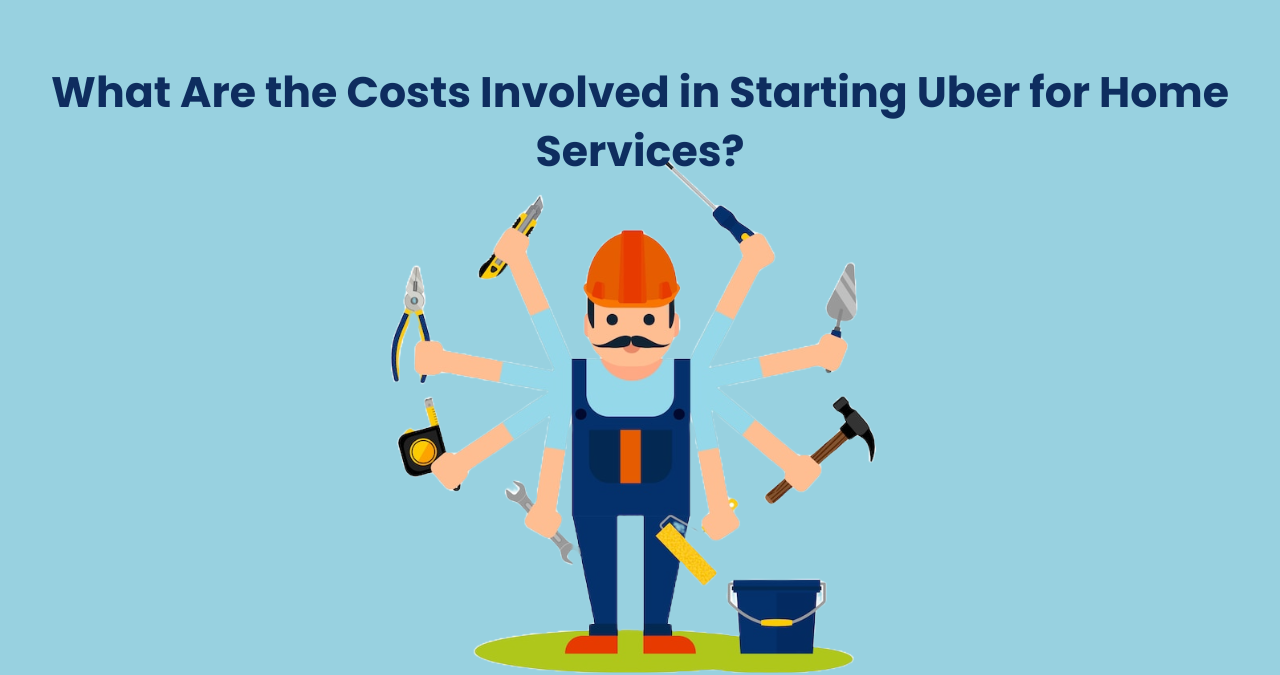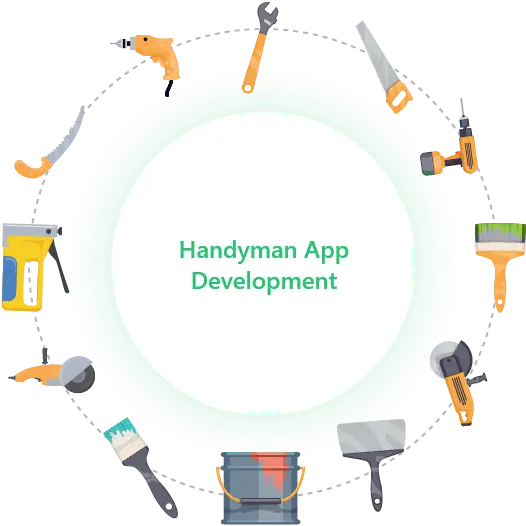What Are the Costs Involved in Starting Uber for Home Services?

Starting an on-demand home services business, often referred to as "Uber for Home Services," has become a popular idea due to the growing demand for convenience. Consumers want fast, reliable, and professional services like cleaning, plumbing, electrical work, and more, available at the touch of a button. However, just like any business venture, there are a lot of costs involved in making this dream a reality.
In this blog, we’ll break down the various costs involved in creating an Uber-like home services platform, from initial development to operational expenses.
Conceptualizing the Business Model
Before jumping into the costs, it’s essential to understand the basic framework of an "Uber for Home Services" business. This platform acts as a marketplace, connecting service professionals (like cleaners, electricians, or plumbers) with customers in need of their services.
In simple terms, it works like this:
- Service Providers: These are professionals offering home services (e.g., plumbers, carpenters, etc.).
- Customers: Individuals who need these services at their homes.
- Platform: A mobile app or website that connects the two parties.
Once you understand this basic structure, you’ll need to work on refining the details of your platform’s services. This is where you will start to see the costs pile up, from design to development to operational expenses.
Initial Setup Costs
Business Registration and Legal Fees
The first cost you’ll incur is registering your business and handling the legalities. You’ll need to:
- Register your company: This includes obtaining necessary licenses and permits to operate legally in your area.
- Legal fees: Hire a lawyer to help with the terms and conditions, privacy policies, and contracts with service providers.
- Insurance: Since your platform will be facilitating services in people’s homes, insurance is crucial to cover any potential liabilities.
Estimated Costs: $500 to $5,000, depending on the legal requirements in your area.
Market Research and Branding
Before you develop your platform, you must do thorough market research to identify your target audience, competition, and the demand for specific home services. Based on your research, you can create a brand identity, which involves designing a logo, choosing a name, and deciding on the tone and look of your business.
Estimated Costs: $1,000 to $5,000 (market research and branding).
App and Website Development
Platform Development Costs
Building the actual platform is the largest cost you’ll face. Developing an "Uber for Home Services" app involves several components, including:
- User Interface (UI) and User Experience (UX): The app must be easy to navigate, intuitive, and visually appealing.
- Mobile App Development: You'll need separate apps for service providers and customers, which require both Android and iOS versions. The app should allow users to book services, pay, track service providers, and leave reviews.
- Backend Development: This includes the server-side development that powers your platform, manages customer data, payment processing, etc.
Features to Include
Some basic features you’ll need in the app are:
- Real-time Booking System: For customers to schedule services at their convenience.
- Payment Gateway Integration: For easy and secure online payments.
- Geolocation: To help users track service providers in real-time, similar to Uber’s ride-hailing feature.
- Ratings and Reviews: To ensure service quality and build trust among users.
- Notifications: To alert users when their service provider is on the way or when the service is completed.
Estimated Costs: $15,000 to $50,000 (or more), depending on the complexity of the app and the development team.
Operational Costs
Once your platform is built, you’ll have several ongoing operational expenses. These can include:
Marketing and Customer Acquisition
You need to attract both service providers and customers to your platform. Here are some marketing methods that can drive growth:
- Digital Marketing: This includes social media ads, Google ads, and content marketing to target potential customers.
- Search Engine Optimization (SEO): To rank higher on Google and get organic traffic.
- Referral Programs: Offering incentives to existing users to refer new users can help spread the word quickly.
Estimated Costs: $1,000 to $10,000 per month, depending on your marketing strategy.
Read More: Blinkit Business Model: Costs of Developing a Similar Grocery Delivery App
Hiring and Managing Service Providers
Although service providers work independently, you’ll need to manage and vet them to ensure they meet your platform’s standards. You’ll have costs related to:
- Recruitment and Screening: Conducting background checks and verifying certifications.
- Commission: Depending on the model you choose, you might take a commission from the service providers for each job they complete.
- Customer Support Team: You’ll need a team to handle customer complaints, inquiries, and service provider issues.
Estimated Costs: $2,000 to $5,000 per month for management and support.
Payment Processing Fees
Payment processing companies like PayPal, Stripe, or a local payment gateway provider charge transaction fees for processing online payments. These fees typically range between 2.5% to 5% per transaction.
Estimated Costs: Varies depending on volume but can range from $500 to $2,000 per month.
Hosting and Server Maintenance
Your platform will need servers to host the website and app. These servers must be reliable, fast, and secure to avoid downtime and data breaches.
Estimated Costs: $500 to $5,000 per month, depending on the scale of your platform and the number of users.
Upgrades and Maintenance Costs
Once your platform is live, you’ll need regular updates and maintenance to keep things running smoothly:
- Bug Fixes: Resolving issues that arise in the app.
- Feature Enhancements: Adding new features to keep users engaged.
- Security Updates: Protecting user data from security threats.
Estimated Costs: $2,000 to $10,000 per year.
Scaling and Expansion
As your business grows, you’ll need to invest in scaling your operations. This can include expanding to new cities, adding new services, or upgrading your platform to handle more users.
Estimated Costs: $10,000 to $50,000 or more for expansion.

Conclusion
Starting an "Uber for Home Services" platform is no small task, but with careful planning and budgeting, it can be a profitable business. The costs can vary greatly depending on the features you want to include, the quality of service, and the scale of your platform. However, understanding the expenses involved is key to building a successful business. Whether you're developing the platform yourself or opting for a pre-built solution like a Gojek clone app, you’ll need to ensure that your business remains flexible, scalable, and focused on customer satisfaction.
By considering everything from development and marketing to ongoing operational costs, you’ll be better prepared to make informed decisions that ensure long-term success in the competitive home services industry.
- Art
- Causes
- Crafts
- Dance
- Drinks
- Film
- Fitness
- Food
- Games
- Gardening
- Health
- Home
- Literature
- Music
- Networking
- Other
- Party
- Religion
- Shopping
- Sports
- Theater
- Wellness



